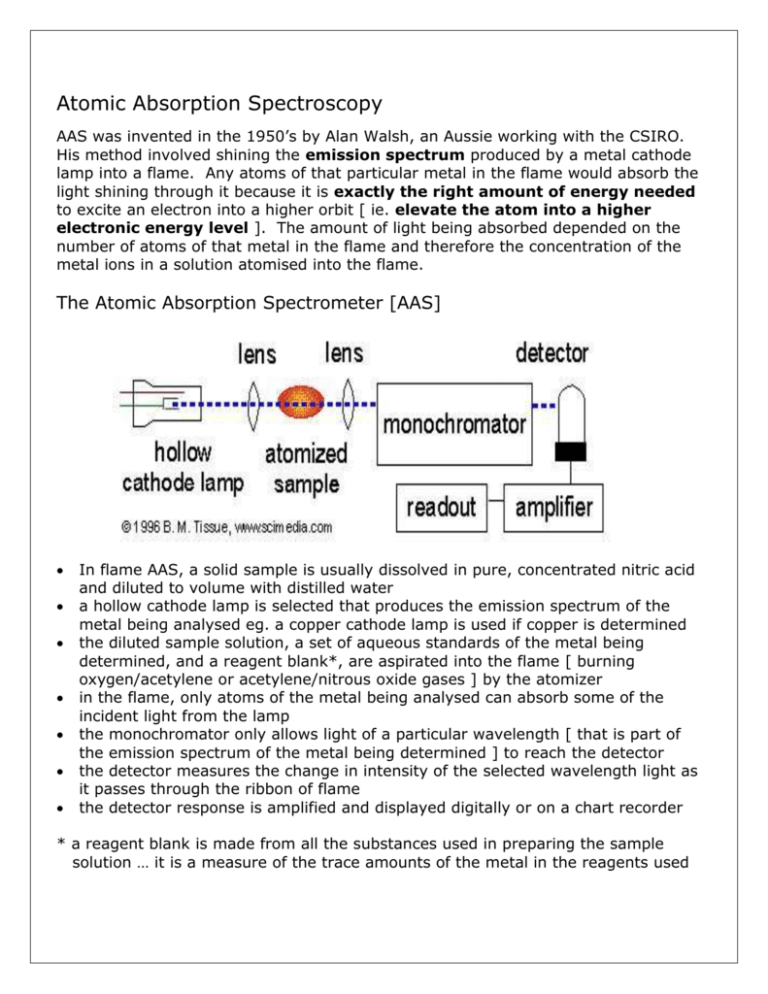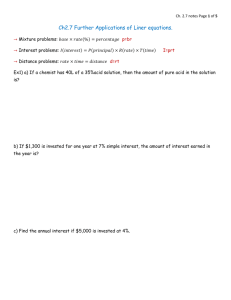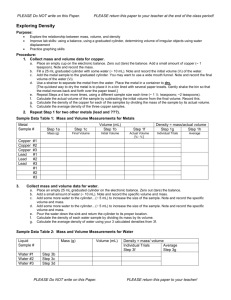AAS Notes - Physicsservello
advertisement

Atomic Absorption Spectroscopy AAS was invented in the 1950’s by Alan Walsh, an Aussie working with the CSIRO. His method involved shining the emission spectrum produced by a metal cathode lamp into a flame. Any atoms of that particular metal in the flame would absorb the light shining through it because it is exactly the right amount of energy needed to excite an electron into a higher orbit [ ie. elevate the atom into a higher electronic energy level ]. The amount of light being absorbed depended on the number of atoms of that metal in the flame and therefore the concentration of the metal ions in a solution atomised into the flame. The Atomic Absorption Spectrometer [AAS] In flame AAS, a solid sample is usually dissolved in pure, concentrated nitric acid and diluted to volume with distilled water a hollow cathode lamp is selected that produces the emission spectrum of the metal being analysed eg. a copper cathode lamp is used if copper is determined the diluted sample solution, a set of aqueous standards of the metal being determined, and a reagent blank*, are aspirated into the flame [ burning oxygen/acetylene or acetylene/nitrous oxide gases ] by the atomizer in the flame, only atoms of the metal being analysed can absorb some of the incident light from the lamp the monochromator only allows light of a particular wavelength [ that is part of the emission spectrum of the metal being determined ] to reach the detector the detector measures the change in intensity of the selected wavelength light as it passes through the ribbon of flame the detector response is amplified and displayed digitally or on a chart recorder * a reagent blank is made from all the substances used in preparing the sample solution … it is a measure of the trace amounts of the metal in the reagents used Example of Atomic Absorption Spectroscopy AAS Analysis Determination of the Copper Content of Foodstuffs The trace analysis of copper in foodstuffs can be determined by atomic absorption Spectroscopy [AAS]. A weighed sample of the food is digested carefully in a concentrated solution of pronalys grade nitric acid. When dissolved the sample is diluted to volume in a volumetric flask with distilled water. A set of copper standards are prepared by dissolving exact amounts of a pure copper salt in a nitric acid solution. The sample solution, copper standards and a nitric acid/distilled water blank were then aspirated into the flame of an atomic absorption spectrometer fitted with a copper cathode lamp. AAS Procedure: sample preparation: 10.0 g of foodstuff digested with 10 mL Pronalys grade nitric acid, then diluted to 100.0 mL with distilled water standards and blank: copper nitrate dissolved in 10% Pronalys nitric acid, containing 0 [blank] , 1.0, 2.0, 5.0, 10.0 mg/L Cu AAS – Perkin-Elmer model 460, oxygen/acetylene flame, Cu-cathode lamp, monochromator set at 324.8 nm. AAS Results: Solution analysed 1.00 mg/L Cu standard 2.00 mg/L Cu standard 5.00 mg/L Cu standard 10.0 mg/L Cu standard diluted food sample 10% nitric acid blank AAS Absorbance @ 324.8 nm 0.054 0.103 0.252 0.535 0.383 0.002 Analysing the Results: the reagent blank absorbance is subtracted from the other readings a calibration graph of absorbance vs. mg/L copper is constructed the copper content [mg/L] of the diluted food sample is taken off the calibration graph the copper content of the foodstuff in ppm [ mg Cu per kg sample ] is calculated from the dilution factor




